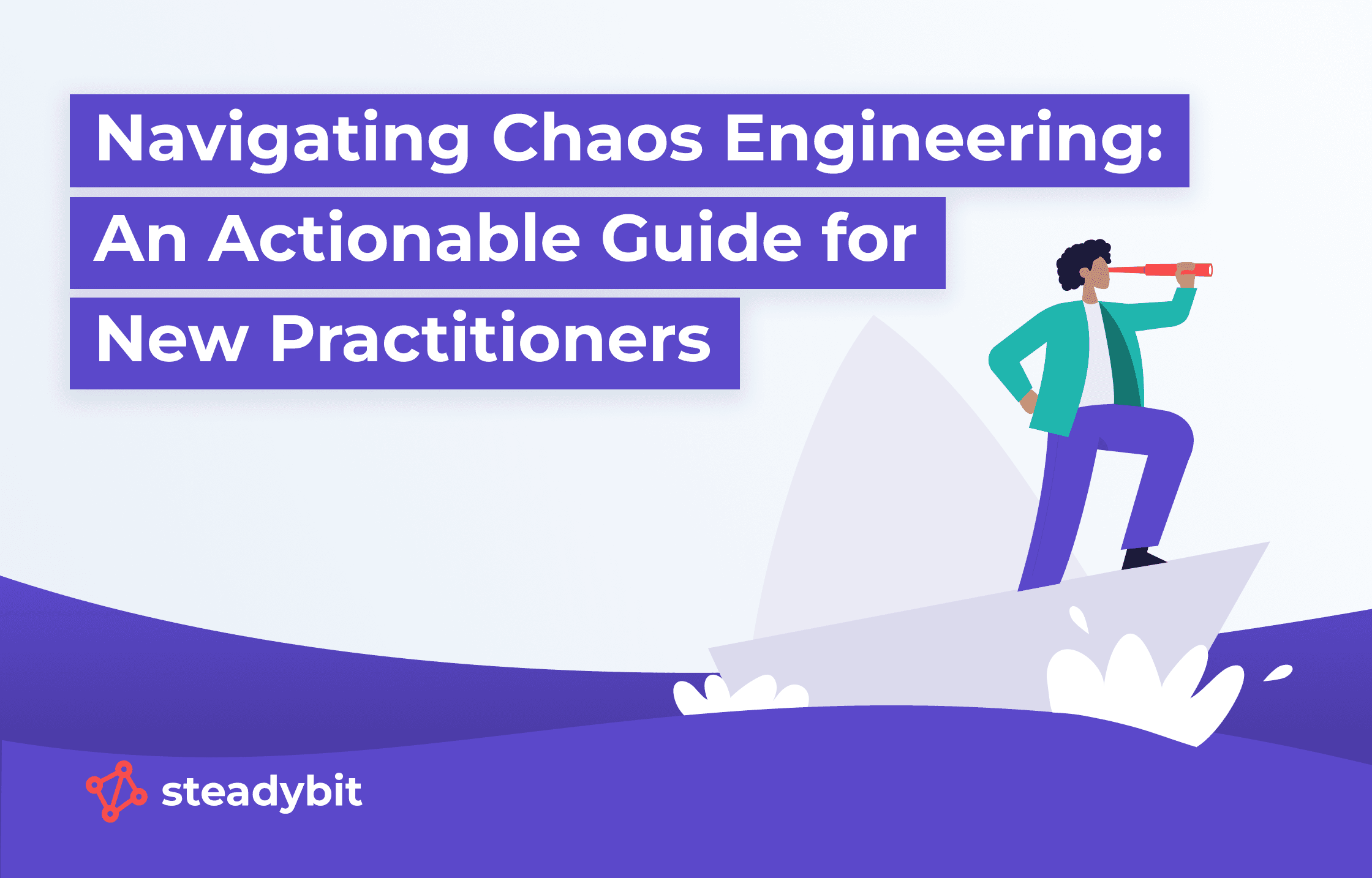Navigating Chaos Engineering: An Actionable Guide for New Practitioners

How to Implement Chaos Engineering with Steadybit
Modern distributed systems are inherently complex and unpredictable. Recognizing the inevitability of failures, referred to as Murphy’s Law, is crucial. Chaos Engineering leverages these failures as learning opportunities to create more resilient systems.
This guide outlines how to effectively integrate Chaos Engineering principles into your organization using the Steadybit platform.
What is Chaos Engineering?
Chaos Engineering involves deliberately introducing disruptive events, such as server outages or API throttling, to test an application’s response in both testing and production environments. The objective is to uncover vulnerabilities and assess system resilience.
Key Elements of Chaos Engineering
- Hypothesis-Driven: Formulate a clear hypothesis regarding the system’s reaction under specific stress conditions.
- Automated Experiments: Utilize automation tools to consistently introduce failure scenarios.
- Controlled Environment: Conduct experiments in controlled settings to mitigate unintended consequences.
- Continuous Improvement: Learn from each experiment and iterate on processes to enhance system resilience.
Why Chaos Engineering?
Traditional testing methods often fall short in predicting the performance of complex distributed systems under stress or failure conditions. Chaos Engineering anticipates unexpected issues, allowing for their identification and resolution before they escalate.
Benefits of Chaos Engineering
- Proactive Issue Identification: Detect weaknesses before they lead to real-world outages.
- Enhanced System Resilience: Develop systems capable of seamless recovery from failures.
- Improved Team Preparedness: Equip teams with the skills necessary for rapid issue resolution.
First Steps with Steadybit
Steadybit provides a comprehensive platform for implementing Chaos Engineering efficiently. Follow these steps to get started:
- Define Your Hypothesis: Identify expected outcomes when a specific part of your system experiences failure.
- Plan Your Experiment: Use Steadybit to set up your experiment by selecting the target system component and failure type.
- Run the Experiment: Execute the experiment in a controlled environment. Steadybit offers automatic rollbacks for safety.
- Analyze the Results: Utilize Steadybit’s analytics to compare actual outcomes against your hypothesis.
- Learn and Improve: Identify areas for improvement based on analysis and iterate until the system can handle failures gracefully.
Detailed Steps
- Defining Your Hypothesis: Clearly state expected outcomes during the experiment.
- Example: “Throttling our database API by 50% will increase application response time by 30%.”
- Planning Your Experiment: Select impacted components (e.g., databases, microservices).
- Determine failure types (e.g., latency injection, resource exhaustion).
- Executing the Experiment: Conduct experiments during low-impact periods initially.
- Monitor using Steadybit’s real-time dashboards.
- Analyzing Results: Compare actual outcomes against expected results.
- Document findings for future reference.
- Learning and Improving: Implement changes based on insights gained.
- Re-test modified components to verify improvements.
Best Practices
To ensure successful implementation of Chaos Engineering with Steadybit:
- Start Small: Begin with less critical systems, non-production environments, and non-peak hours.
- Gradual Progression: Increase experiment intensity and frequency gradually.
- Involve Your Team: Ensure participation from development, operations, and management teams.
Additional Tips
- Document Everything: Maintain detailed records of all experiments for future analysis.
- Use Metrics Extensively: Leverage performance metrics (e.g., latency, throughput) for actionable insights.
Chaos Engineering has transitioned from an optional practice to an essential one in today’s digital landscape. With Steadybit, embarking on a Chaos Engineering journey is no longer daunting or complex due to its user-friendly interface.
By embracing Chaos Engineering, organizations can proactively identify system weaknesses and build resilient infrastructure. Start your Chaos Engineering journey with Steadybit today to prepare your systems for any unexpected challenges that may arise.
FAQs (Frequently Asked Questions)
What are the key elements of Chaos Engineering?
The key elements of Chaos Engineering include being hypothesis-driven, where you formulate a clear hypothesis regarding the expected outcomes of the experiment, and systematically introducing controlled disruptions to validate those hypotheses.
Why is Chaos Engineering important?
Traditional testing methods often fall short in predicting how complex systems behave under stress. Chaos Engineering helps teams proactively identify potential issues before they impact users, thereby enhancing system reliability.
What are the benefits of implementing Chaos Engineering?
The benefits of Chaos Engineering include proactive issue identification, allowing teams to detect weaknesses before they lead to outages or performance degradation, ultimately resulting in more resilient systems.
What are the first steps to implement Chaos Engineering with Steadybit?
Steadybit provides a comprehensive platform for implementing Chaos Engineering. The first steps include defining your hypothesis clearly and setting up controlled experiments to test the resilience of your system.
What best practices should be followed when conducting Chaos Engineering experiments?
To ensure successful implementation of Chaos Engineering with Steadybit, it’s essential to document everything. Maintain detailed records of all experiments conducted, including the hypotheses tested and the outcomes observed.
What tools can be used alongside Steadybit for Chaos Engineering?
In addition to Steadybit, various tools such as Gremlin, Chaos Monkey, and Litmus can be utilized to enhance Chaos Engineering practices. These tools help in orchestrating chaos experiments, monitoring system performance, and analyzing the impact of disruptions.
How can teams measure the effectiveness of their Chaos Engineering experiments?
Effectiveness can be measured by analyzing several key performance indicators (KPIs) before and after conducting experiments. Metrics such as system availability, response time, error rates, and user experience should be monitored to assess the impact of introduced disruptions.
What types of failures should be targeted in Chaos Engineering experiments?
Chaos Engineering experiments should target various types of failures including network latency, server outages, resource exhaustion, and dependency failures. By simulating these scenarios, teams can identify vulnerabilities and improve system resilience.
How does a culture of experimentation support Chaos Engineering initiatives?
A culture of experimentation encourages teams to embrace failure as a learning opportunity. This mindset fosters collaboration, innovation, and continuous improvement within organizations, making it easier to implement Chaos Engineering practices effectively.